Anth Test 2: The Living Primates
1/141
There's no tags or description
Looks like no tags are added yet.
Name | Mastery | Learn | Test | Matching | Spaced |
|---|
No study sessions yet.
142 Terms
derived traits
Traits that develop in a particular taxon-(group of any rank, such as a species, family, or class.) after they split from their common ancestor
Despite same basic adaptations, theres still a lot of diversity
morphological, ecological, and behavioral diversity
Traditional Primate Classifications
Prosimii- Lemurs, Lorises, Tarsiers
Anthropoidea- Monkeys, apes, humans
Suite of characters
Each lineage or species posses unique abilities that make it better suited to a particular habitat and lifestyle.
Pentadactyly
5 digits
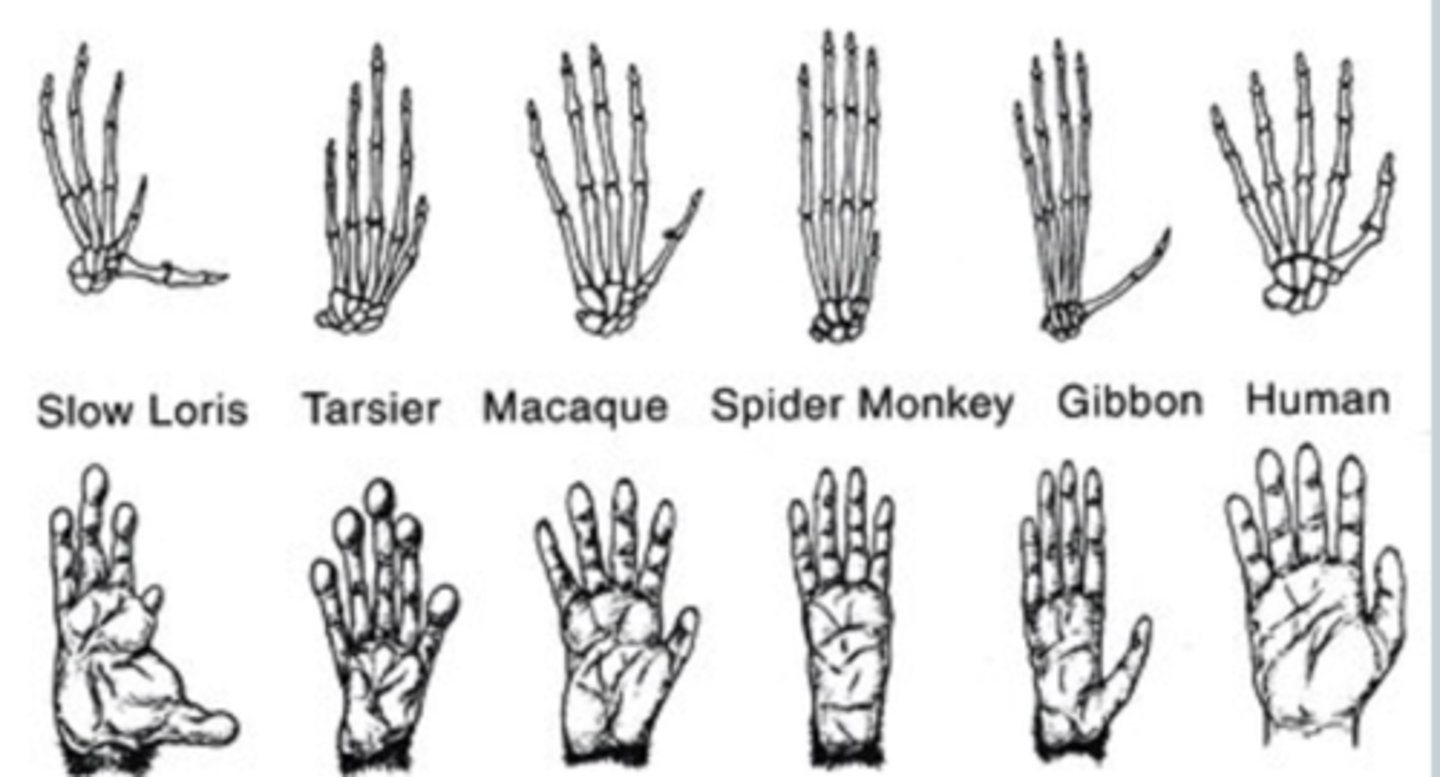
Class of primates
Mammalia
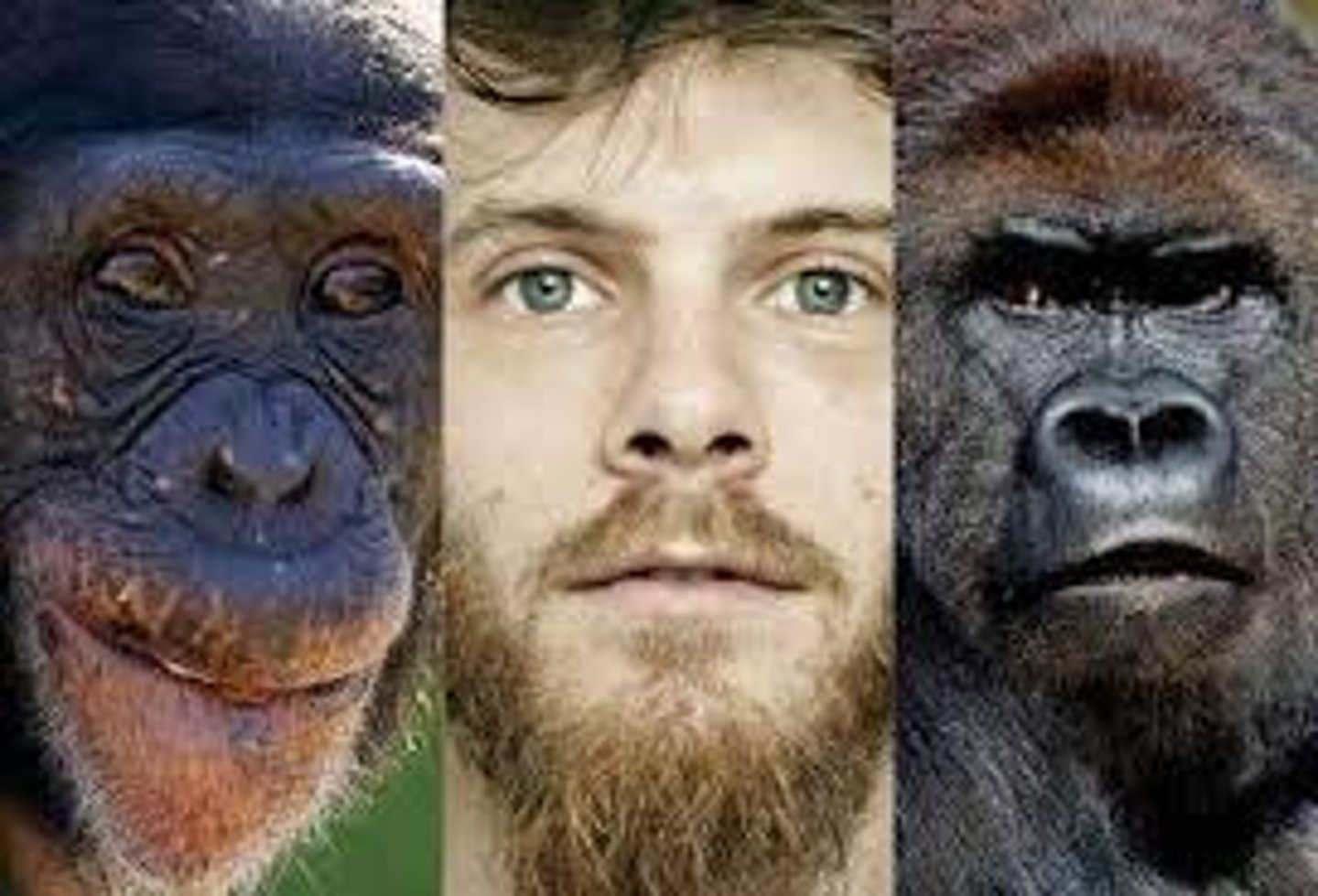
primitive traits
traits passed on, unchanged from ancestor
Approximately how many species of nonhuman primates are there?
230-270
What makes a primate a primate?
-Extremities adapted for prehension, (ex: opposable thumbs or toes that allow us to grip and grab things based on our enviroment. Food , trees )
AND
-Vision: olfactory apparatus reduced
- Slow reproductive rate
-Large Brian
-Homeothermy: constant body temp
-Specialized skeleton
Stereoscopic vision, binocular vision, and color vision
Ster- depth perception (can i jump from here to there)
bin- depth perception, but eyes located at the front
color- obvious
Slow reproductive rate...
Increases parental care
Flat nails and tactile pads
Helps with grip, tool use, sensitivity ( feeling a branch to see if its dead. if I climb on it will it hold me?)
Senses of the Brain
-Reduced olfaction: decreased snout ---> reliance on vision
- Expansion and Increased complexity of the brain: In particular in the Neocortex---> the visual and association areas
Primate diet and teeth
-generally omnivorous, reflected in their generalized dentition.(not specific to one food)
-most eat a combination of fruits, leaves, insects
-most have four types of teeth: incisors, canines, premolars and molars
-heterodont dentition (a type of dentition in which an animal has more than one tooth morphology, meaning the teeth have different shapes and functions in different parts of the jaw)
-sexual dimorphisms in canines (difference in characteristics between Males and Females)
What kind of Dentition? (the arrangement or condition of the teeth in a particular species or individual.)
-Heterodont (dentition where teeth are differentiated into different types, or morphologies, and have different shapes and sizes and purposes)
Incisors (four front teeth for sheering)
canines (for cutting)
Premolars
Molars
Dental Formula
number of each tooth type in each quadrant of the mouth (2:1:2:3) 2 incisors, 1 canine, 2 premolars, 3 molars for humans
For a newer monkey, (2:1:3:3) 2 incisors, 1 canine, 3 premolars, 3 molars
theres a max of 2:1:3:3
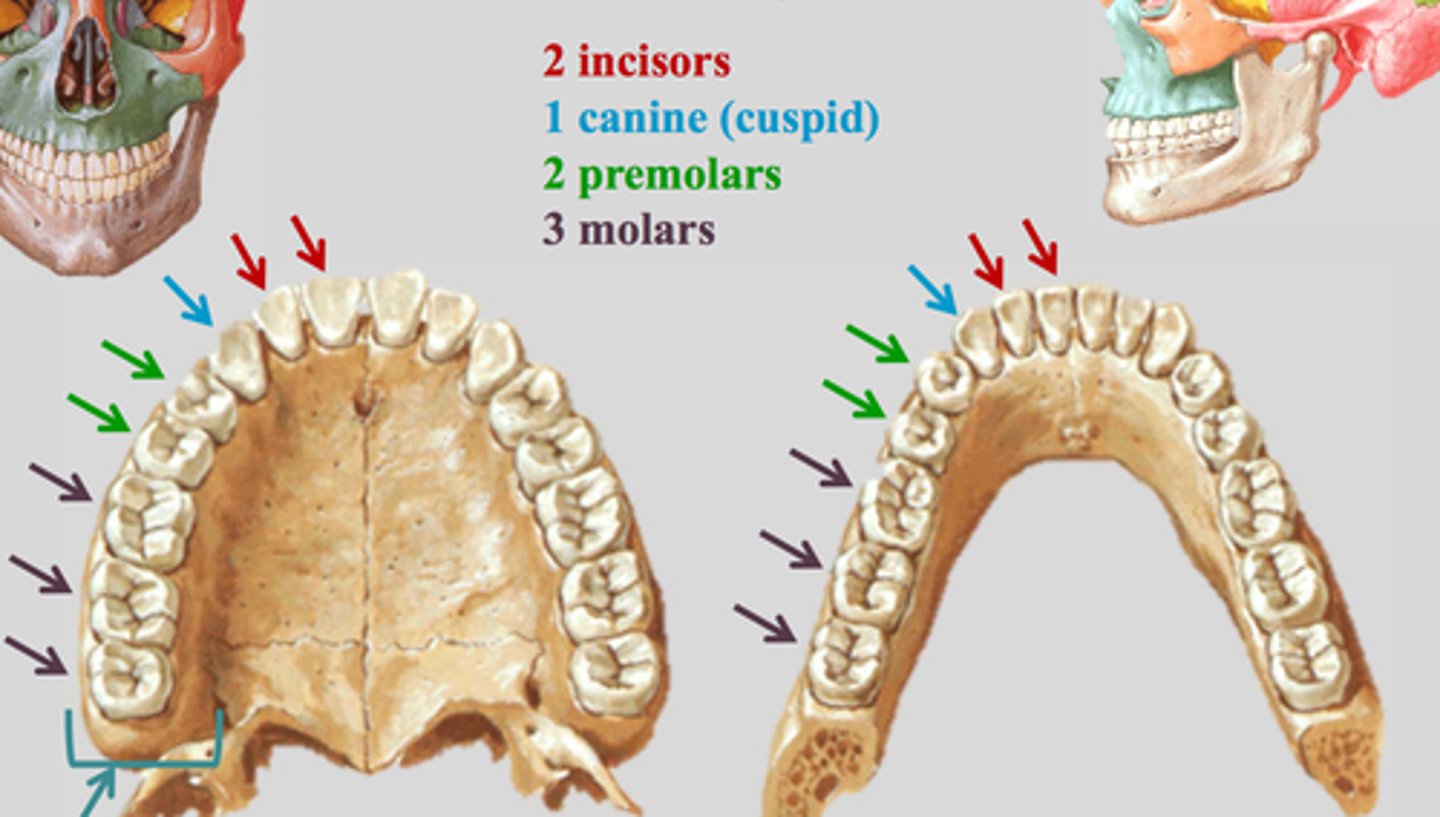
Dental arcade
the shape of the mouth pallet
Most are quadrupedal
Knucklewalking (most apes)
Then
- vertical clinging and leaping
-Arm swinging, called Braciation (found among the apes, i.e. monkey bars)
-prehensile tails (New world monkeys)
two suborders of primates
Strepsirhini- Lemurs and lorises (wet noses)
Haplorhini- traiser monkeys apes humans (dry noses)
Stepsirhini
-the most primitive or close to earlier mammalian ancestors
-more reliance on olfactions evidenced by moist, fleshy pas, or rhinarium
Superfamily: Lorisoidea
Lorises are found on mainland (Asia/Africa), nocturnal, quadrupedal
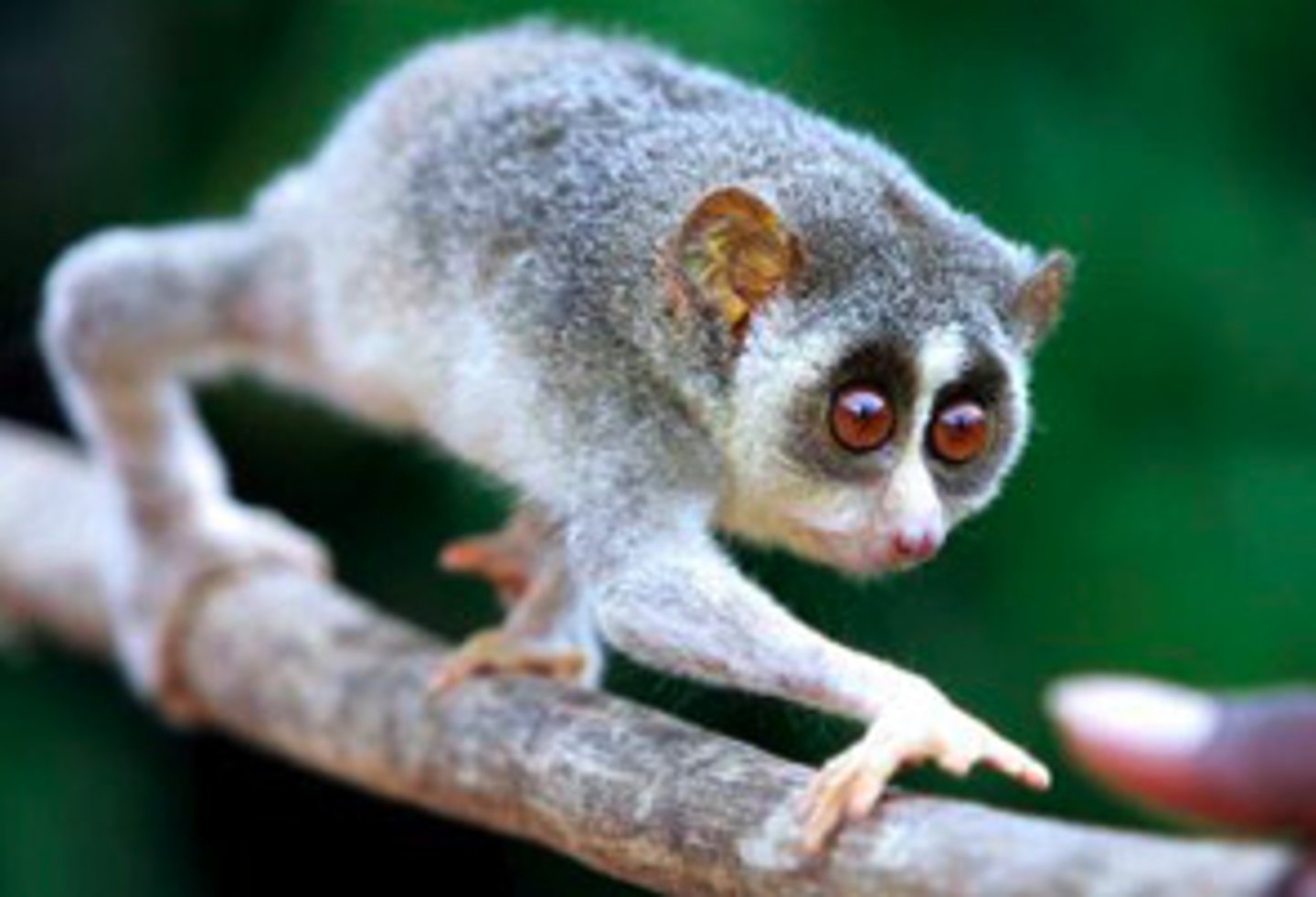
Superfmaily: lemuroidea
Lemurs only found in Madagascar and surrounding islands
-can be nocturnal or diurnal
-abboreal or terrestrial
-quadrupeds, leapers, and climbers
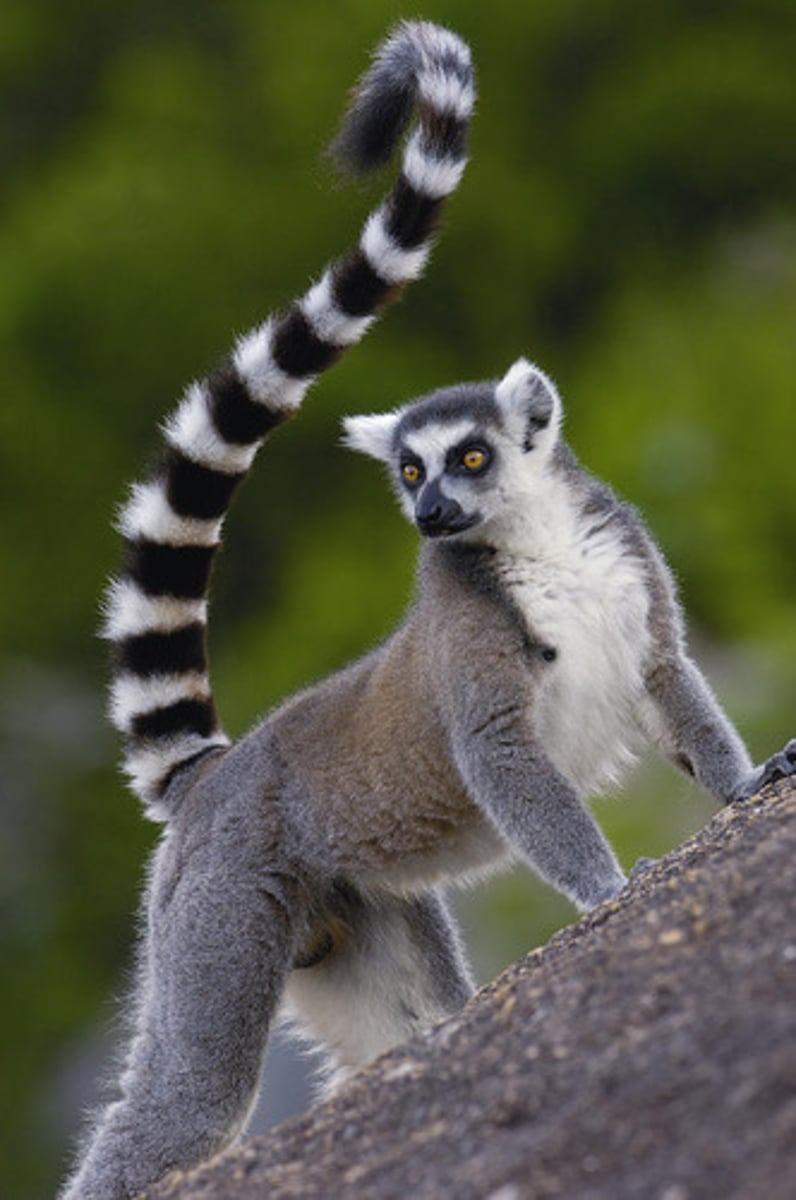
Infraorder Tarsiiformes: Tarsiers
-Nocturnal, leapers, climbers
-highly specialized and entirely carnivorus
-closely related to monkeys and apes
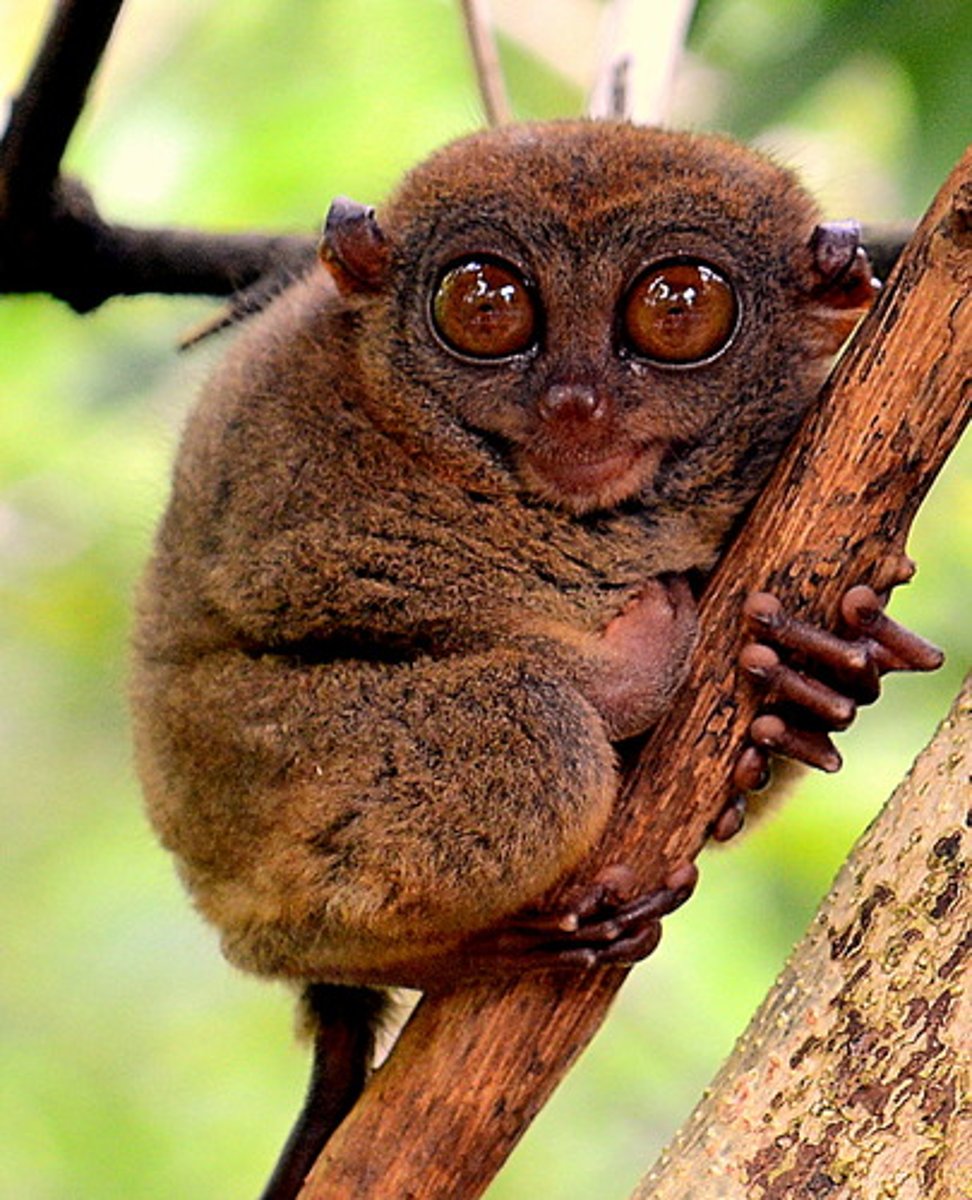
Anthropoids (monkeys, apes, humans)
Common traits:
-Larger brain and body size
-Reduced reliance on the sense of smell, greater reliance on vision
-Bony plate at the back of the eye socket (more protection)
-generalized dentition
-increased parental care
-Longer gestation and maturation periods
-more mutual grooming
Old and New World Monkeys
Separated by geography and several million years of evolutionary history.
Both old and new arose in Africa from common monkey ancestor
monkeys "rafting" over on chunks of land that had broken away from mainland areas
Two Groups of monkeys
Platyrrhini- New World. flat outward flaring nostrils
Catarrhini- Old World.
Platyrrhini (NW)
Tropical forest of central and south america
-flat noses, outwardly flaring nostrils
-prehensile tails (use tails to grab hold and balance)
-2:1:3:3 (teeth)
-abboreal
Families of Platyrrhini (NW)
-Cebidae Capuchins (tool use)
-Callitrichidae (twinning)
-Owl monkey. The only nocturnal NW monkey
Catarrhini (OW)
-Africa, Asia
-2:1:2:3 (teeth)
-sexual dimorphism high
-abboreal or terrestrial
Superfamilies of Catarrhini (OW)
-Ceropithecoidea (all old world monkeys)
-Hominoidea (apes and humans)
ceroPITHecoidea
Bilophodont molars: molars that have 4 cups, oriented in 2 parallel rows that resemble ridges or "lophs"
-Africa and Asia
-Have tails but are not prehensile
Superfamily: Hominoidea
-NO tails
-larger body size
- y-5 molars (the lower molar teeth of apes and humans have five cusps, or raised points, on their grinding surfaces instead of 4).
-short lumbar region (lower back)
-less sexual dimorphism
-More complex behavior, brains, and abilities.
-more time for infant development
Family: hylobatidae
-Gibbons and Siamangs
-called "Lesser apes"
-Brachiators (arm swingers, i.e. monkey bars)
Family Hominidae
Subfamilies: Ponginae (orangutans), Gorillinae (gorillas), and Homininae (chimps, bonobos, humans)
Subfamily: Poginae
-orangutans
-Only in Southeast Asia
-most solitary
-high sexual dimorphism
-feed primarily on fruit
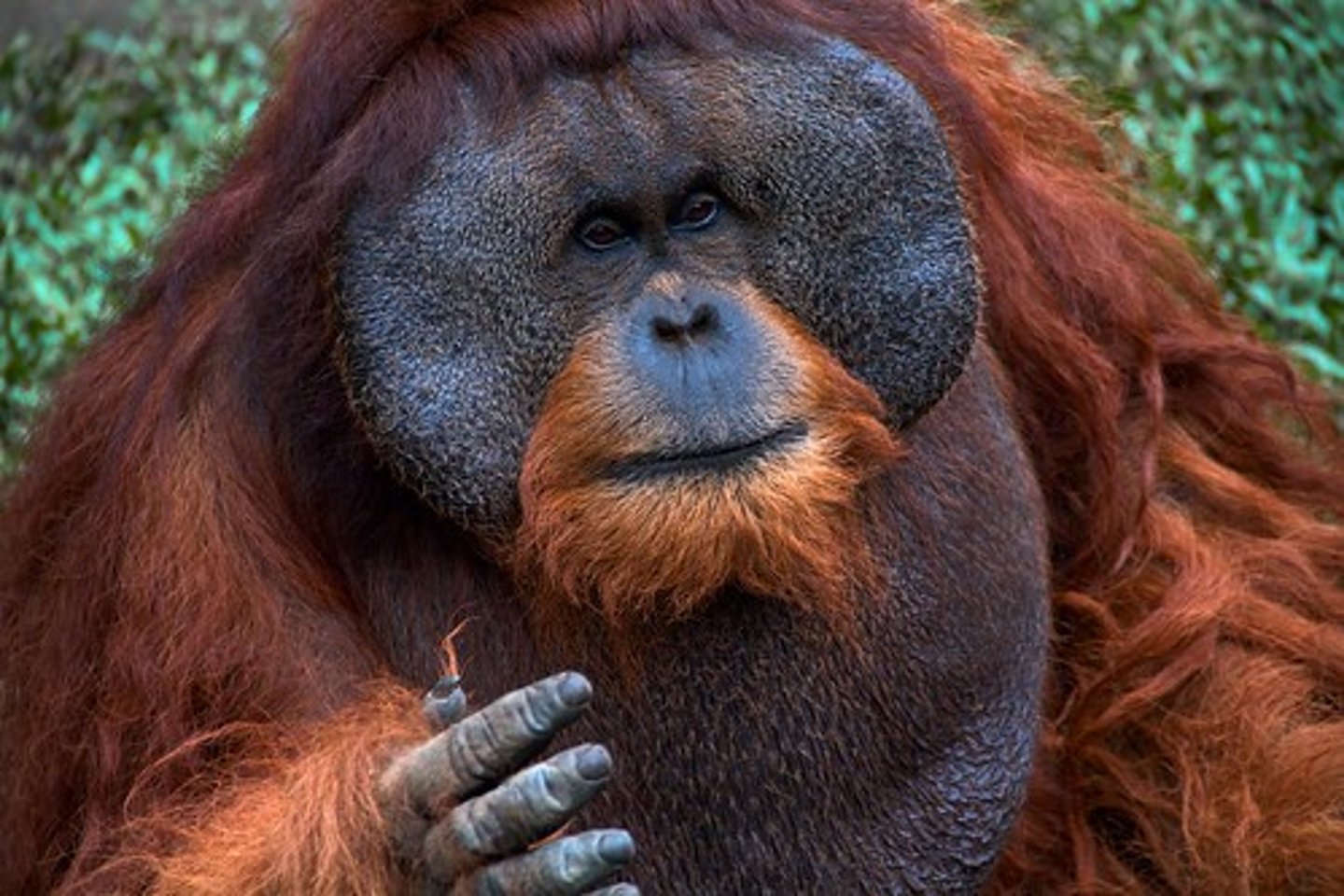
Subfamily: Gorillinae
-Gorillas
-largest of the apes
-terrestrial, knuckle walkers
-live in small groups
-folivores (eat leaves)
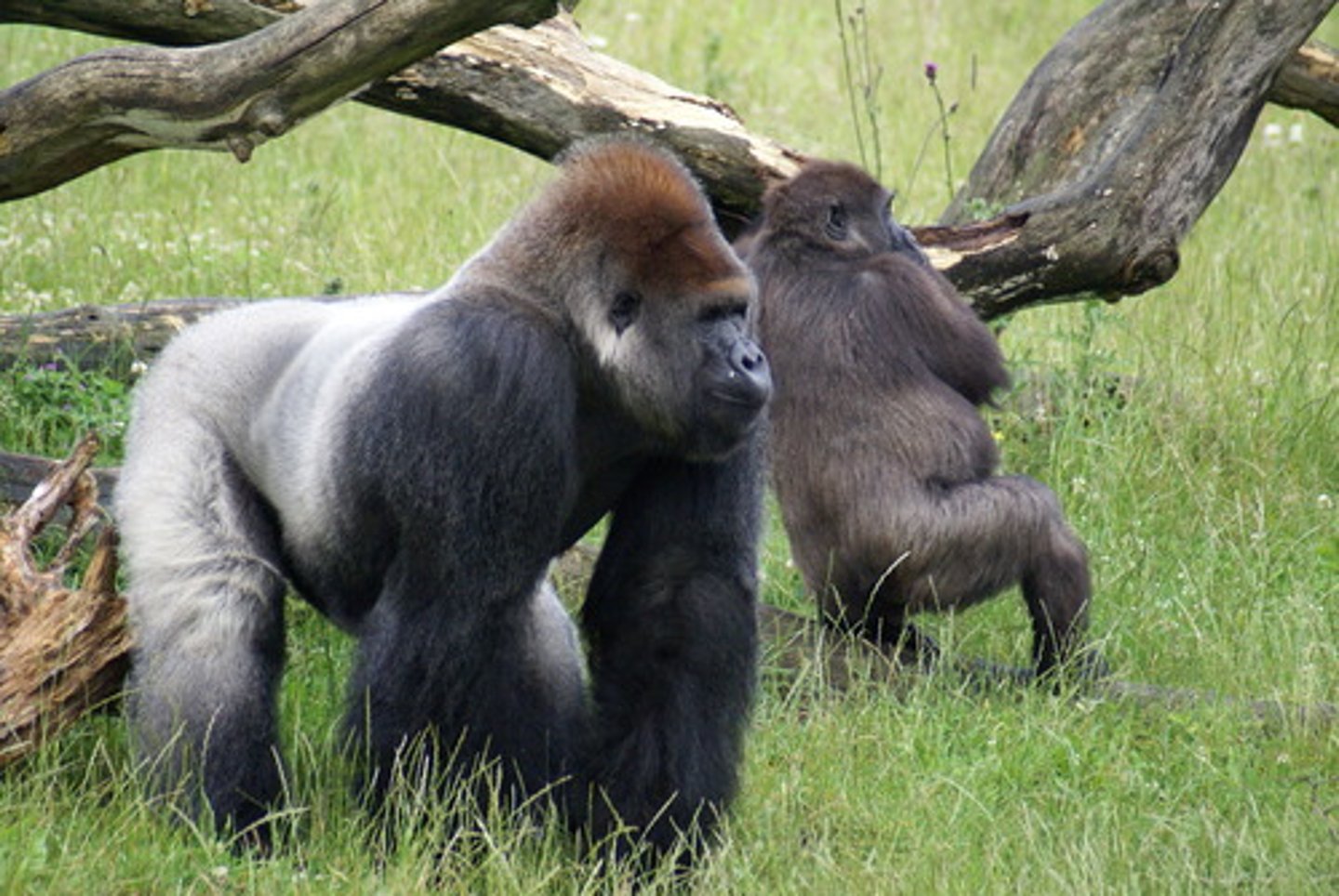
Subfamily: Homininae
-chimps, bonobos, humans
-Tribe: Panini
-2 types of chimps
common pygmy (bonobos) chimps
-Fision-fusion society (a social organization where the composition and size of groups change over time as animals move through their environment. This is characterized by groups merging (fusion) or splitting (fission).
form large multimale-multifemale communities
-Frugivores (Fruit eaters) (primarily) but do hunt
-only primate that routinely uses tools
-bonobos have an unusual sexual behavior
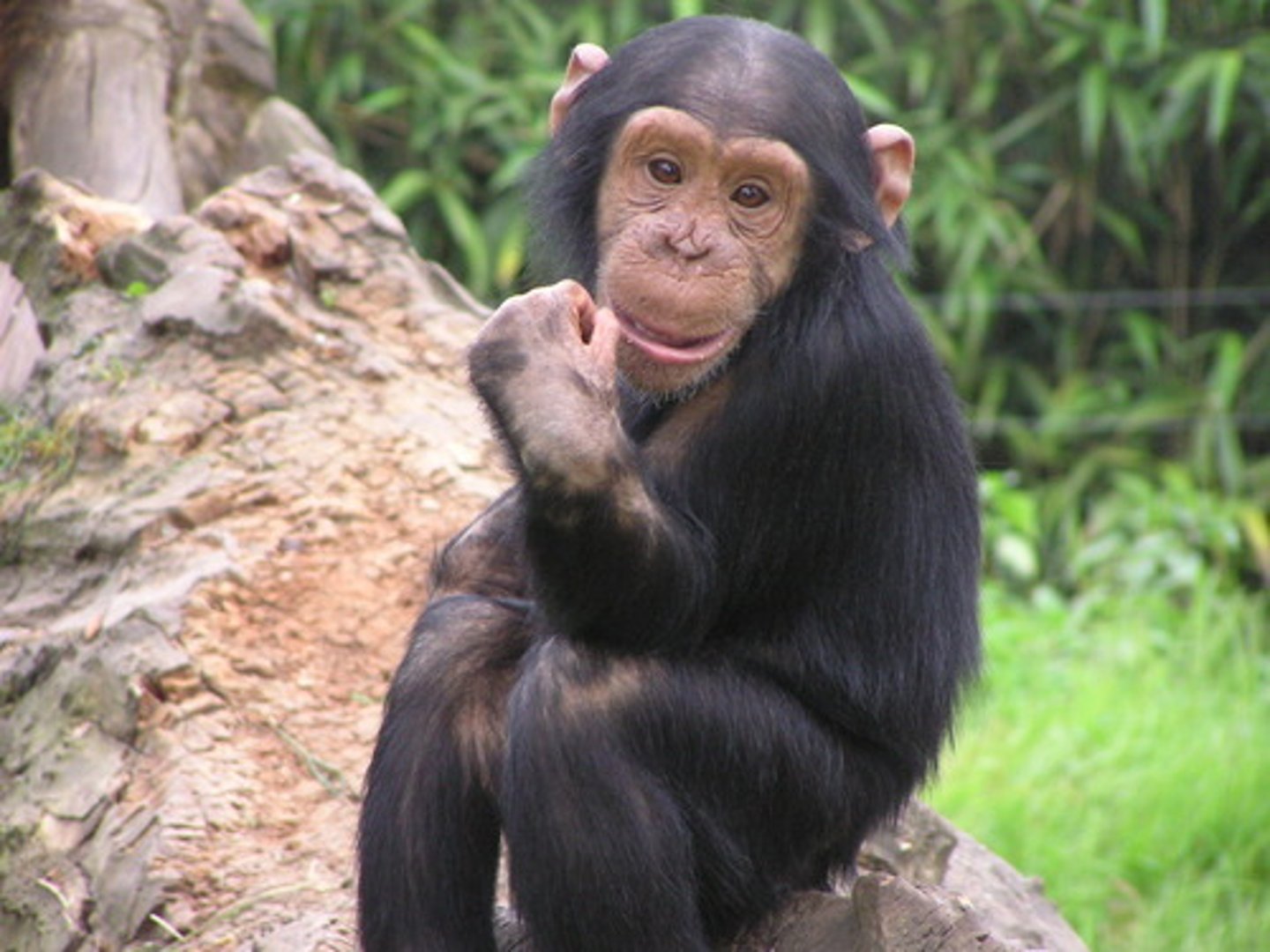
Subfamily: homininae
tribe- hominini (humans and all our ancestors)
Behavioral ecology
focuses on the relationship between behaviors the natural environment, and biological traits of species
-natural selection favors behaviors that enhance survival and reproduction.
evolution of behavior
species vary in their limits and potentials for learning and for behavioral flexibility
-product of genetics and environment
Social structure
-composition, size, and sex ratio of a group of animals
-are the results of natural selection in specific habitats
they influence individual interactions and social relationships.
-evolution of intelligence among most primates is tied to socialization.
social structure can be influenced by...
1.) body size
larger animals are better able to retain heat and their overall energy requirements are less than for smaller animals.
2.) distribution of resources
ex: fruits and nuts can be exploited by smaller groups (they aren't nearly as common as fruits and leaves which are abundant for larger groups)
3.)predation
when predation pressure is high, large communities are advantageous
4.) dispursal
results in: lowering the competition for mates, decreasing likelihood for inbreeding
survival strategies
1.)behaviors that increase reproductive sucess
ex: almost all primates sleep in the safety of trees or on cliffs if there are no trees around (gorillas are the only primates to sleep on the ground)
activity patterns
-most primates are diurnal (active during day, sleep at night)
-nocturnal species tend to forage alone or 2-3
social systems:
-Noyau/solitary: stay with mother for 8 years then become solitary
-monogamy: one partner for life
-polyandry: one woman, multiple males
-polygyny: one male, multiple females, and fission fusion
Noyau/solitary
-based on adult female and her offspring
-males
only come together to mate and male has nothing to do with offspring
-common is prosimians (lemurs,lorisoids) and poginae (orangutans)
Monogamy
one adult male, one adult female, and immature offspring
-mate for life
-intense territorial competition- intersexual competition
-tarsiers, gibbons, aotus (owl monkey)
-vocal duetting
-increased paternal care/mate assurance
-territoriality
-no or little sexual dimorphism
polyandry
-one female, multiple males
-males
-tamarins- twinning
forms of polygyny
-one male polygyny: single, male, multi-female, high degree of sexual dimorphism, bachelor groups
baboons, langurs, ect.
-multimale polygyny: many adult male and females and their offspring, sexual competition between males, enlarged testes- sperm competition
-fission fusion polygyny: temporary associations of individuals come together and split up repeatedly, chimps, bonobos and spider monkeys
dominance hierarchies
-these impose order by establishing parameters of individual behavior
-higher ranking animals have greater access to preferred food and mating partners than lower ranking individuals
infant-icide
when a female is breastfeeding, she cannot have another baby at that time. the male will kill the offspring to impregnate her once again.
reproductive strategies
behavioral patterns that contribute to individual reproductive success
-primates are k-selected. K-selected species are generally those who live long, have few children, and have high parental investment.
-male: dominance hierarchies, infanticide
-female: sexual selection, female choosiness, sexual dimorphism(dif b/w males and females)/dichromatism (diff colors, a type of dimorphism)
mothers, fathers and infants
female and her infants
males: males get older and leave mom to find another group
-primate mothers have no innate knowledge of how to care for an infant. learning is essential to establishing a mothers attraction to her infant.
alloparenting
where the group is helping to raise offspring
"it takes a village to raise a child"
communication
-autonomic response: physical response not under voluntary control. (goosebumps, blushing, hair standing on back of neck)
-deliberate communication
display
displays serve to communicate emotional states
aggression
-conflict arises out of competition for resources...
result in signals and displays
-aggression is useful in maintaining order and protecting resources
conflict between groups
primate groups are associated with a home range where they remain permanently
aggression: territory
home range actively defended against intrusion
Prosocial behaviors: altruism, affiliation, cooperation
-prosocial behaviors: are actions that benefits other individuals and or society as a whole.
-altruism : benefits another individual but as some potential risk or cost to oneself
-Affiliation: includes reconciliation, consolation, and simple amicable interactions b/w friends and relatives
-cooperation
prosocial behaviors that include assistance, sharing, caregiving, and perhaps compassion (...empathy)
grooming
common among primates and reinforces social relationships (picking at fur to get rid of bugs, etc.)
hunting and tool-use
-baboons- share
-orangutangs
-chimps
-macaques
why be social?
PROS:
-provides defense against predators
-watch for predators
-counterattacks (baboons)
-control territory against competitions
-food
-learning
-access to mates
-alloparenting (community helping w/ kids)
CONS:
-competition for food and access to mates
Why study primate behavior?
-model of extinct and extant human behavior
-how natural selection shapes behavior
-learn more about our non-human relatives
endangered primates
-Over half of all living primates are endangered, many face immediate extinction
three reasons:
-habitat destruction
-human hunting
-live capture for export or local trade
The Bushmeat trade
-estimated that thousands of primate are killed and sold for meat every year.
-primates are also killed for commercial enterprise.
Artifacts (material culture)
-Objects or materials that fashioned or altered by hominins
-express facts of human culture
-2.6 Ma
ex: ceramics and lithics
Fossils
-Any mineralized trace of impression of an organism that has been preserved from past geologic time.
-often involves the hard parts of an organism (ex: horns, teeth)
Endocast
a cast of the cranial cavity of a skull, especially useful for studying fossils of extinct species, helps determine size and shape of the brain. ex: 3d cast of the inside of a skull
Coprolite
Fossilized feces
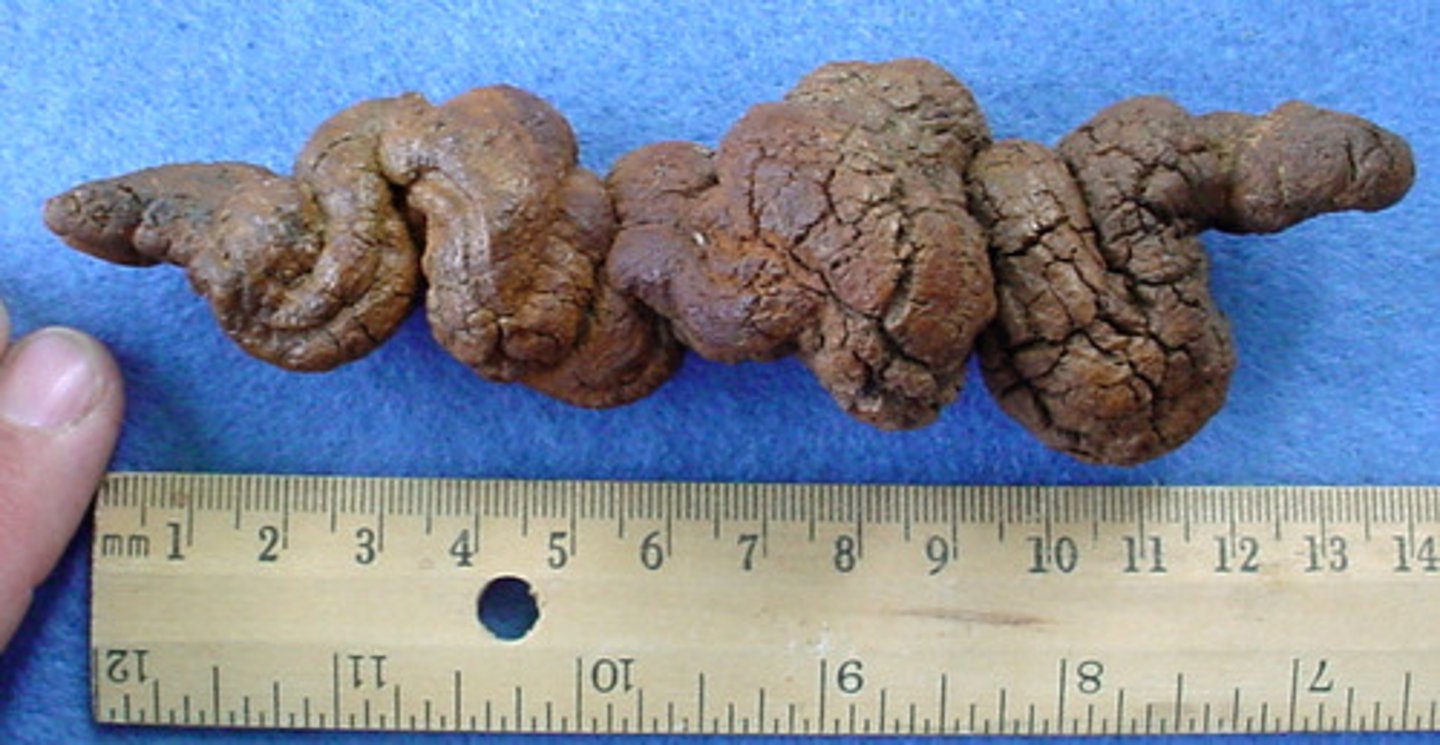
Taphonomy
-Study of transition from biosphere to the lithosphere
or
-The study of how bones and other materials come to be buried in the earth and preserved as fossils.
-looks at whether materials are primary or secondary context
(why is a part of skeleton missing, or farther away from rest of body, maybe scattered. different reasons for why that could be)
-Geological processes (being frozen, moved or shaped by river, etc.)
-Biological processes (digging them up and moving/anything that disturbs where they are originally deposited)
Context
-Primary context: The context of an artifact, feature, or site that has not been disturbed since its original deposition.
-Secondary context: Context of an artifact that has been wholly or partially altered by transformation/site formation processes after its original deposit, as in disturbance by human activity or geological processes after the artifacts' original deposition
Rift Valley
-caused by underlaying tectonic uplift that produces surface cracks in the overlying continental crust. This exposes older sediments.
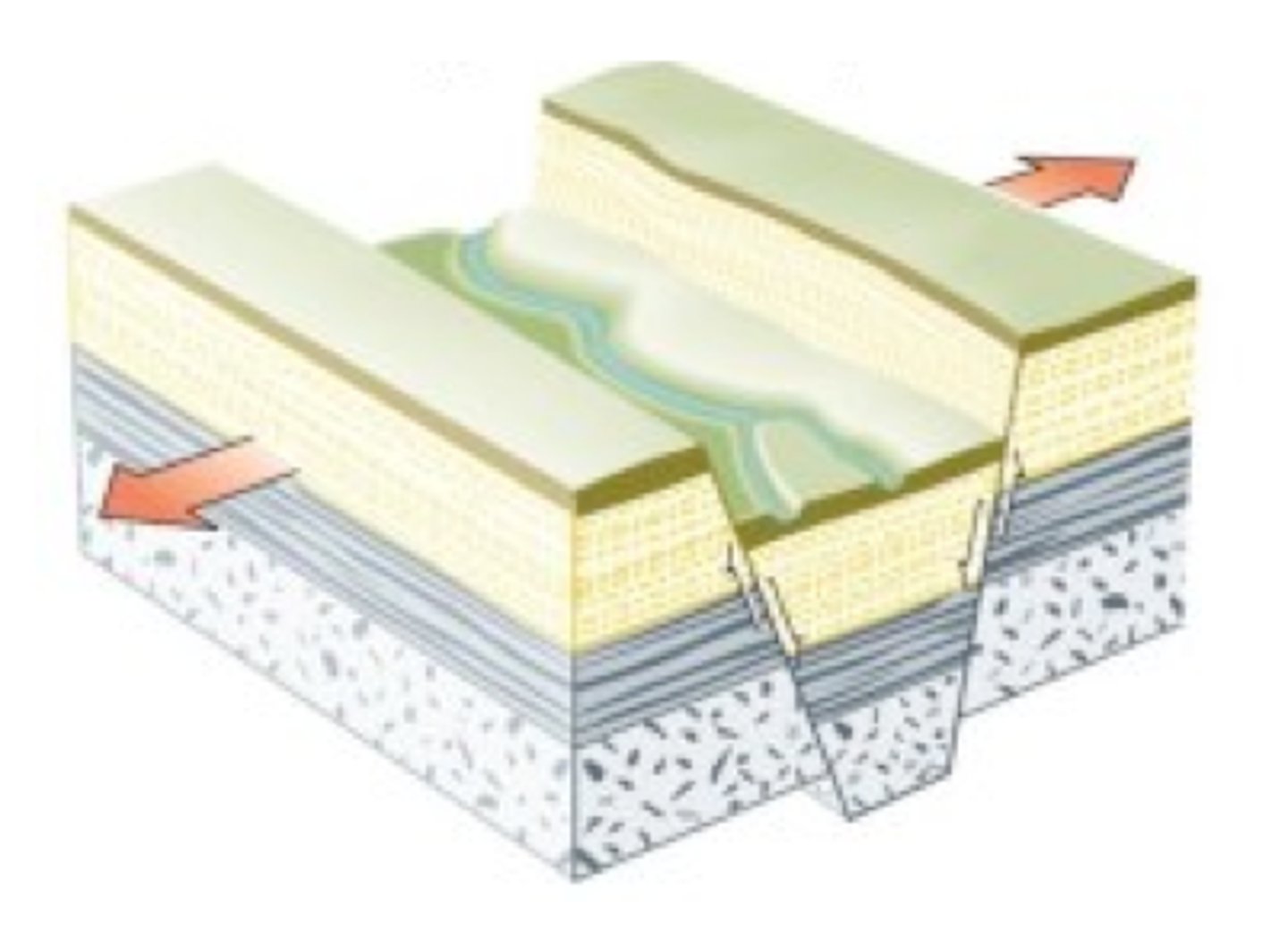
How organisms are preserved
-dont have to be fossilized
THEY CAN BE....
-frozen
-enclosed in a resin such as amber
-preserved in water- especially anaerobic environment (w/o oxygen)
-mummified in tar pits, peat, oil, asphalt, bogs, or due to acidity
-mummified due to culture processes
Ecofact
-natural objects that have been used or affected by humans
(ex: bones, pollen) indicates human activity
features
kind of artifact that cannot be removed from the site
(ex: hearth/fireplace)
Site
A known or suspected location of human activity in the past that contains a record of that activity.
(ex: Pompeii)
Site Formation
-Stratum (strata): first Layers of rock, representing various periods of deposition
-Stratified:
-Sterile Layer: layer where no more artifacts, etc. are found
Locating Sites:
Clues:
-Irregularities of the ground surface
-Unusual soil discoloration
-Unexpected variations in vegetation type and coloring
-Ethnohistorical Data- maps, documents, and folklore (think of the goonies)
Aerial site Recognition and Remote Sensing
Aerial site: get aerial views and images, we frequently use drones now.
remote sensing: anything different from natural vegetation, etc. (how they find shipwrecks)
Excavation
Grid system or point provenience is used
Two goals of this: recover evidence, record exact location
Analyzing the evidence: artifacts
1.) Typological classification: Specific type (ex: look at cars and see how they change overtime. style and advancement can determine specific car)
2.) Metric analysis and Artifact construction : measure the material. often used in typology, also used with fossils.
-How was the artifact made? what material was used?
how was is constructed? what was it used for/purpose?
Use Wear Analysis
Residue or marks left on tools to determine what they were used for/ their purpose. (ex: bone tools used for stabbing termite mounds)
Fossil analysis: Multidisciplinary
Multidisciplinary
- Comparative Anatomy
- 3-D reconstruction
- CT scans
- Genetics
-Anthropometry (looking at how you measure things and how proportionate things are to each other.)
Analyzing Features
-Geographic Information System (GIS)
putting it all in context
works alongside taphonomy
How do we know how old something is ?
-Relative Dating
designating an event/artifact/fossil as being older or younger than another
-Absoltue or Chronometric dating
dates for an event/artifact/fossil based in absolute measure of time (years, centuries, etc.)
Relative dating
-Law of superposition: lower layers are older than upper layers of stratigraphic sequence
-Valuable in reconstructing the history of the earth and life
-Drawback: disturbances shift strata and objects making it difficult or impossible to reconstruct the history
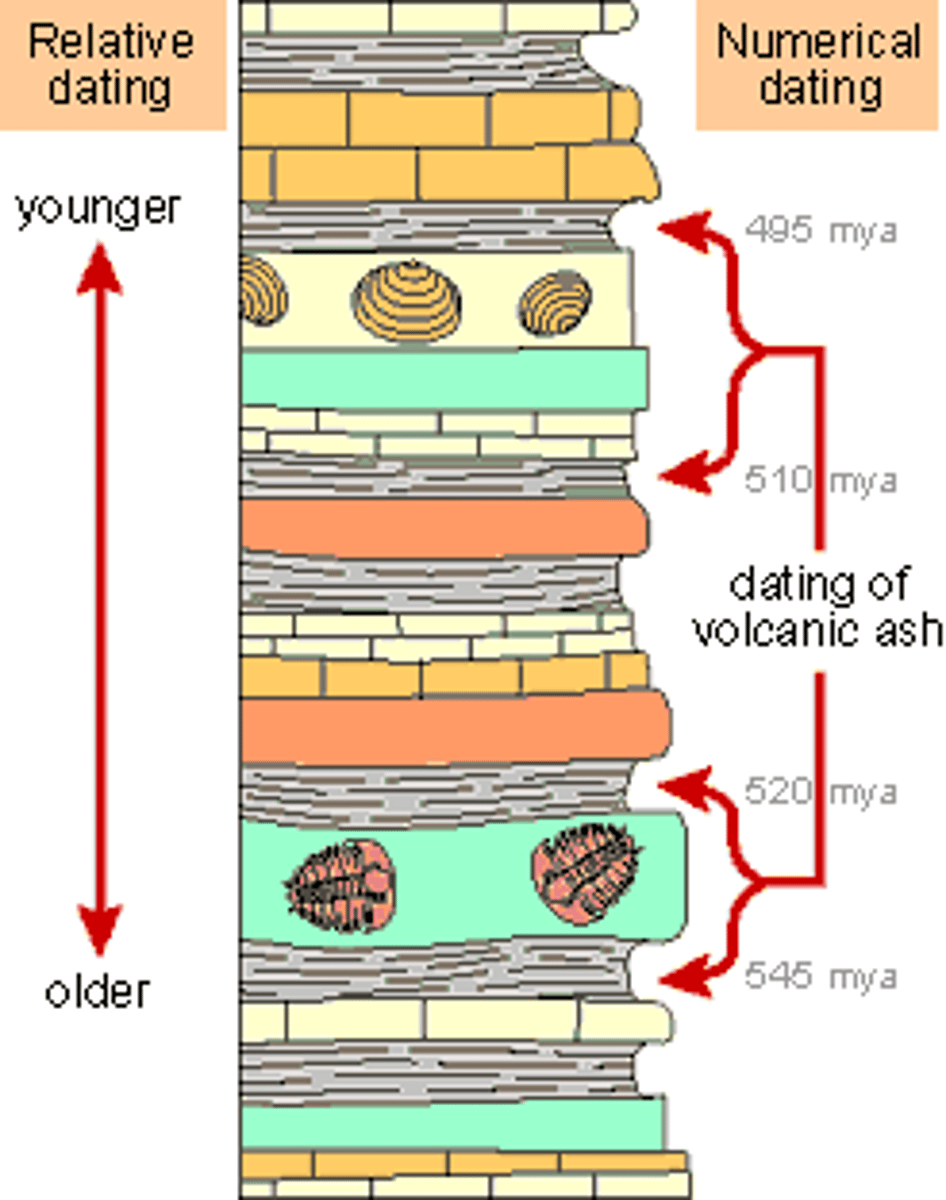
relative dating: Lithostratigraphy
older or younger compared to another rock (layers older or younger than each other)
relative dating: Tephrostratigraphy
using occurances like a volcano erruption to get a relative date if something is older or younger than that event.
relative dating: Seriation
ordering cultural material from oldest to youngest based on stylistic changes.
relative dating: biostratigraphy
understanding one fossil and about when it went extinct. now we can use this information for rough estimates on similar fossils.
Calibrated relative dating techniques
-Uses regular processes that can be correlated to an absolute chronology to estimate the age of a site
Paleomagnetism:
-magnetic polarity recorded in ancient sediments
-direction is used to correlate with geometric polarity time scale to infer an age for the site
chronometric dating techniques
-Radiometric: chronometric techniques that use radioactive decay of isotopes to estimate age.
radiocarbon dating
Looking at overall decay, unstable and stable carbon
-Compares the ratio of radioactive carbon 14 to stable carbon 12
-Accumulate carbon 14 during life; equal to levels in the atmosphere
-After death carbon 14 starts to decay into nitrogen 14
Half-Life
-time it takes one half of radioactive isotope to decay chemically into another isotope (5,730 years)
Radiocarbon Dating
-anything organic
-Only good for about 60,000 years ago to the present
potassium-argon dating (K-Ar)
-compares the ratio of radioactive potassium (K40) to stable Argon gas (Ar40)
- K/Ar has a half life of 1.25 billion years
-best samples include rocks heated extremely high, e.g. by volcanic activities
-not useful for <200,000 years
Chronometric dating
Uranium series: technique using decay of uranium to estimate an age for calcium carbonates including flowstones, shells, and teeth
Electron trap techniques
radiometric techniques that measure the accumulation of electrons in traps in the crystal lattice of a specimen
Thermoluminescense: Technique that uses heat and light to measure the amount of radioactivity accumulated by a specimen since its last heating
-stone contains trace amounts of radioactive elements (uranium or thorium)
-heating the rock releases displaced beta particles that glow
-by heating the sample and measuring its amount of glow, a date can be determined
Electron spin resonance (esr)
-technique that uses magnetic fields to measure the total amount of radioactivity accumulated by a specimen since burial.
Dendrochronology
-comparison of patterns of tree rings
-can only be used in certain regions
-only good for 15 Ka
Geologic time scale
-earliest "evidence" of life: 3.8 Ba
Stromatolites- Stromatolites are layered sedimentary formations created by photosynthetic microorganisms that are some of the oldest fossils on Earth
-286-65 Ma: time of the dinosaurs